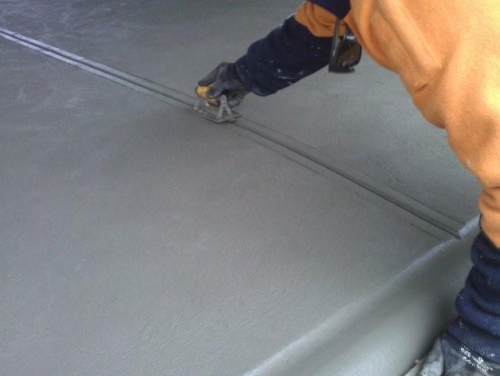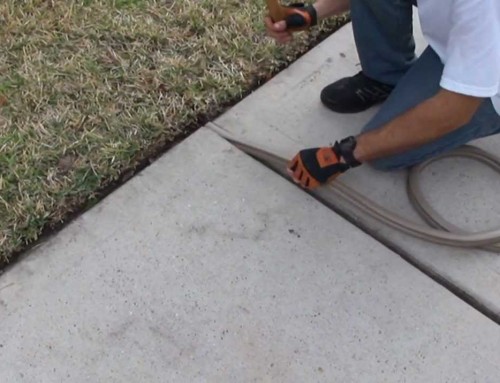Concrete expands and contracts with changes in temperature and moisture. If not properly controlled, cracks can begin to appear. Placement of concrete control joints and expansion joints are crucial when designing and pouring concrete slabs and sidewalks. Both of these types of joints, while very different, help take stress off of the concrete slab.
Concrete control joints should be no less than ¼ of the total thickness of the slab (1” deep for a 4” thick pour) and placed no less than 2-3 times (in feet) the thickness (in inches) of the slab (8-12 feet apart for a 4” thick pour). Control joints can be “created” while the concrete is being poured by using a tool to make the joint. These joints can also be cut into the slab once the slab has cured enough to prevent chipping during the cut. The goal of the control joint is to allow the slab to crack, during expansion and contraction, in a known location and in a straight line.

Expansion joints are put in place before the concrete is poured. Expansion joints are used to allow the slab to move and not put stress on whatever it abuts. These joint are placed where a slab meets a building, where a slab meets another slab, and where a pool deck meets the coping. A pliable material is used (asphalt coated, cork, plastic) to construct these types of joints. The material should extend the depth of the slab and extend the full width of the slab. Ideally, for expansion joints on the exterior of a structure, sealing these joint is preferable. Using a high-quality urethane caulk (Vulkem #116) will help prevent precipitation from entering the joint and freezing. Some of the better caulk/sealants are rated up to 50 years.
With a little planning prior to pouring, utilizing control joints and expansion joints will help minimize cracking and extend the life of the concrete.
If your existing concrete driveway, sidewalk, or patio happens to crack over time, there are several things you can do to prolong the life of the pour. There are adhesive caulks available that can be applied to seal the cracks to prevent water from getting in and freezing. These caulks are available in different colors. The downside is that you will most certainly see the caulk joint. If the crack happens to be straight, it can be sawed out and an expansion joint could be created at this crack. The downside is that the crack is almost never in a straight line. A third solution would be to install a different medium over the existing pour. Brick pavers or flagstone would work. Care needs to be taken to address the crack while installing the new product over the existing concrete. The creation of either an expansion joint or a control joint would be necessary. Otherwise, the crack will permeate through the new product.
We’ve got you covered. Schedule Fred for all your home repair needs.


